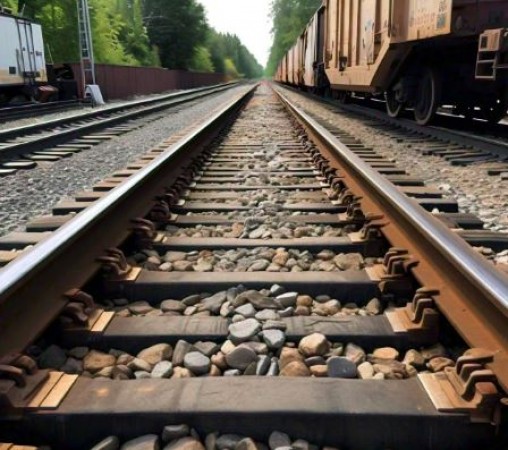
Have you ever wondered why stones are laid on railway tracks? These stones, also known as ballast, are a common sight on railway tracks across the country. While it may seem like a simple matter, the purpose of ballast is crucial to the smooth operation of trains. In this article, we will explore the reasons why ballast is laid on railway tracks and how it affects the functioning of trains.
Why are stones laid on railway tracks?
The stones laid on railway tracks are known as ballast. Ballast is an essential component of railway tracks, and its primary function is to reduce the noise and vibration caused by moving trains. When trains run on the tracks, they create a significant amount of noise and vibration, which can damage the tracks and the surrounding infrastructure. The ballast helps to absorb this noise and vibration, reducing the impact on the tracks and the surrounding environment.
In addition to reducing noise and vibration, ballast also helps to prevent the sleepers (the wooden or concrete slabs that hold the tracks in place) from sinking into the ground. This is especially important in areas with heavy rainfall or flooding, where the ground may become soft and unstable. The ballast helps to keep the sleepers in place, ensuring that the tracks remain stable and secure.
Another important function of ballast is to prevent weeds from growing on the tracks. Weeds can grow quickly and can cause problems for trains, including reducing traction and causing delays. The ballast helps to prevent weeds from growing, keeping the tracks clear and safe for trains to operate.
How are stones laid on railway tracks?
Laying ballast on railway tracks is a complex process that requires careful planning and execution. The process typically involves the following steps:
1. Preparation of the track: The track is prepared by clearing any debris or obstacles.
2. Laying the ballast: The ballast is laid on the track, usually in a layer about 20-30 cm thick.
3. Compacting the ballast: The ballast is compacted using specialized machinery to ensure that it is tightly packed and stable.
How does ballast affect the functioning of trains?
The ballast on railway tracks plays a crucial role in the functioning of trains. Without ballast, trains would not be able to operate safely and efficiently. The ballast helps to reduce noise and vibration, prevent sleepers from sinking into the ground, and prevent weeds from growing on the tracks. All these factors contribute to the smooth operation of trains, ensuring that they can run safely and efficiently.
In addition, the ballast also helps to improve the overall safety of the railway network. By reducing the risk of accidents and delays, ballast helps to ensure that trains can operate safely and efficiently, carrying passengers and freight across the country.
In conclusion, the ballast on railway tracks is a critical component of the railway network. Its importance cannot be overstated, and it plays a vital role in ensuring the smooth operation of trains. While laying ballast on railway tracks may seem like a simple matter, it is a complex process that requires careful planning and execution. The next time you see stones laid on railway tracks, remember the important role they play in keeping our trains running safely and efficiently."
Vi Business and PayU Partner to Boost Digital Payments for MSMEs